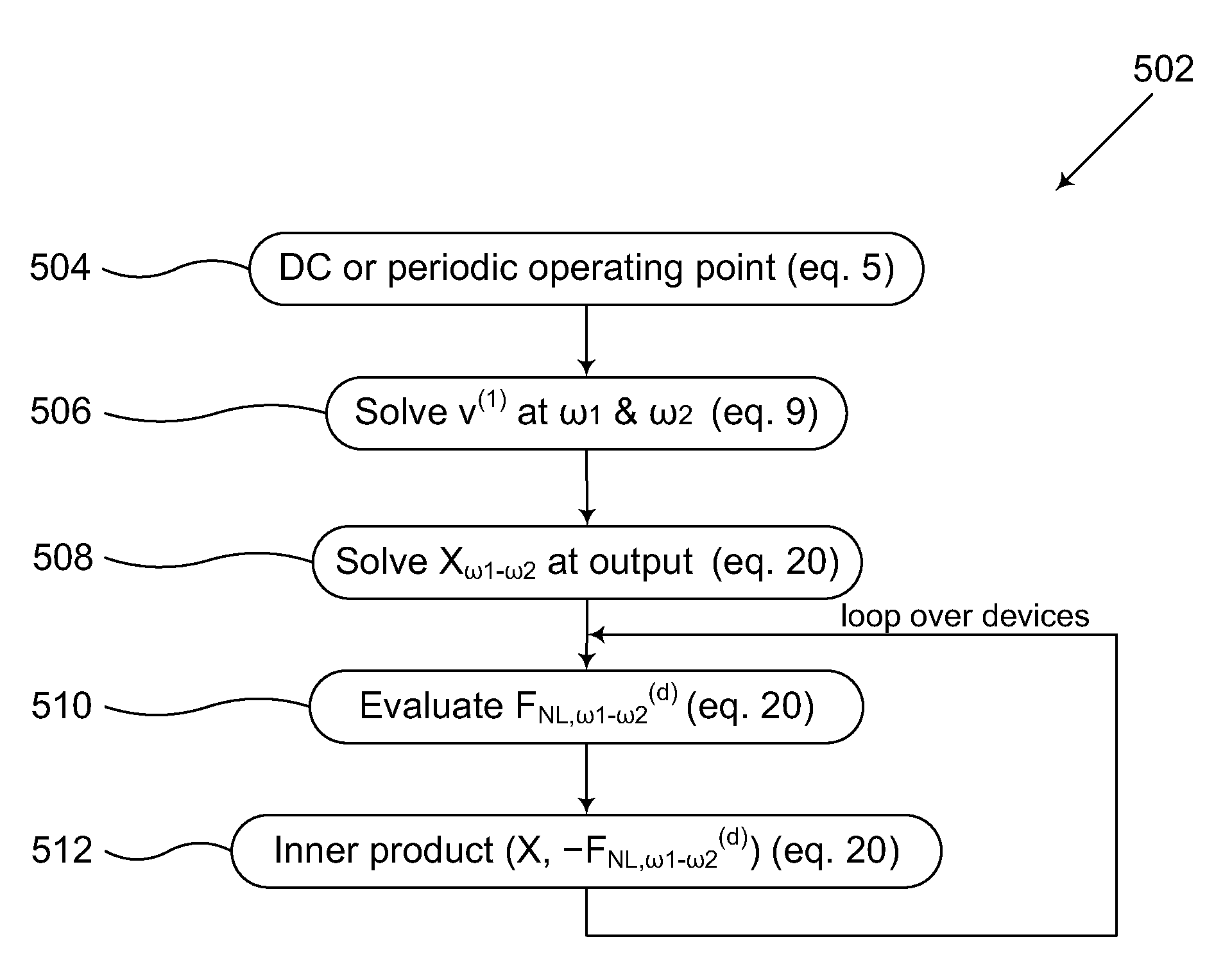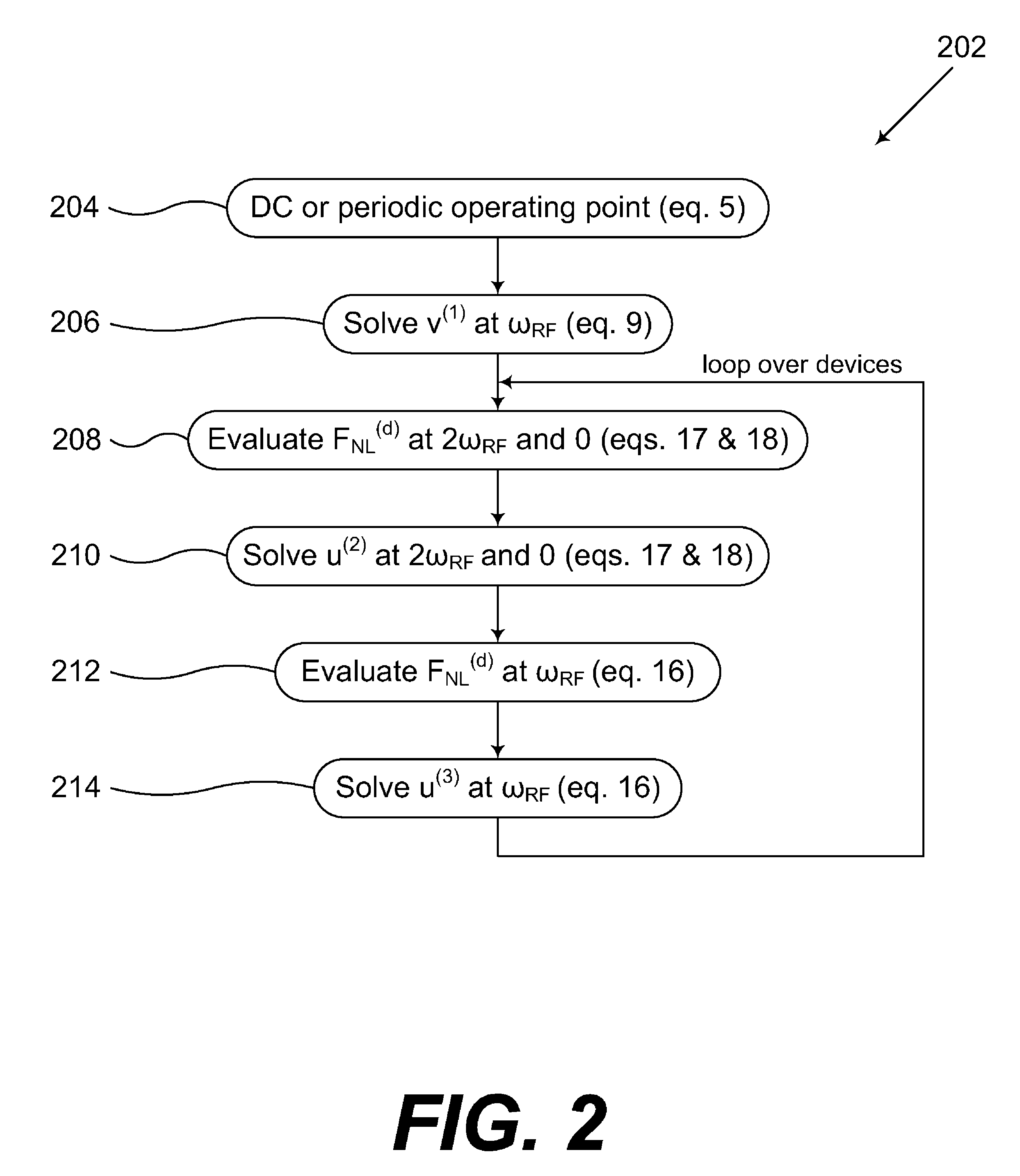Calculating distortion summaries for circuit distortion analysis
a circuit and distortion analysis technology, applied in the field of circuit analysis, can solve the problems of inability to separate, generally requires high-order device derivatives, and the application of volterra series has typically been limited to simple models and simple circuits
- Summary
- Abstract
- Description
- Claims
- Application Information
AI Technical Summary
Benefits of technology
Problems solved by technology
Method used
Image
Examples
Embodiment Construction
1. Introduction
[0021]FIG. 1 shows a system 102 (e.g., a circuit model) that receives an RF input 104 with an input frequency ωRF and produces an output 106 where the input frequency has been modulated by the system (e.g., shifted by a multiple of the LO (Local Oscillator) frequency ωLO. Under non-ideal conditions, the output 106 includes distortions due to the nonlinear effects in the system 102. As described below, the present invention enables quantitative characterizations of how component devices contribute to distortion in the output signal 106. Specific embodiments include calculations for compression distortion and second-order intermodulation products (IM2). This application is related to CALCULATING INTERMODULATION PRODUCTS AND INTERCEPT POINTS FOR CIRCUIT DISTORTION ANALYSIS (application Ser. No. 11 / 303,049, filed Dec. 14, 2005), which is incorporated herein by reference in its entirety.
2. Compression Distortion Summary
[0022]The circuit 102 in FIG. 1 has a periodic time-de...
PUM
 Login to View More
Login to View More Abstract
Description
Claims
Application Information
 Login to View More
Login to View More - R&D
- Intellectual Property
- Life Sciences
- Materials
- Tech Scout
- Unparalleled Data Quality
- Higher Quality Content
- 60% Fewer Hallucinations
Browse by: Latest US Patents, China's latest patents, Technical Efficacy Thesaurus, Application Domain, Technology Topic, Popular Technical Reports.
© 2025 PatSnap. All rights reserved.Legal|Privacy policy|Modern Slavery Act Transparency Statement|Sitemap|About US| Contact US: help@patsnap.com



